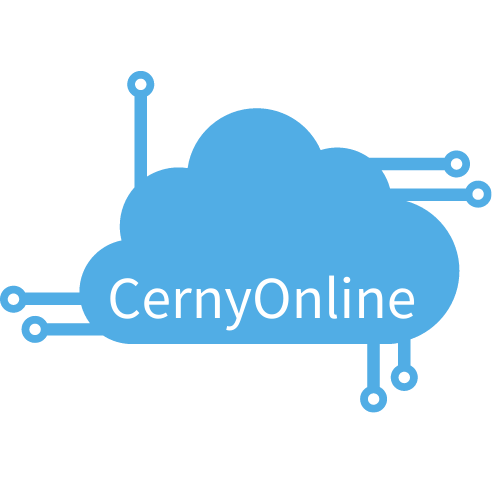Effective health communication strategies to improve public awareness
Health communication has evolved significantly over the past few decades, moving from purely biomedical interventions to more context-based approaches that consider the holistic nature of wellbeing. As defined by the World Health Organization (WHO), health encompasses physical, mental, and social wellbeing rather than merely the absence of disease. Effective communication strategies are essential to bridge the gap between complex medical information and public understanding, ultimately improving health outcomes across communities.
Utilising multiple communication channels
A comprehensive health communication strategy requires employing diverse channels to reach different segments of the population. The effectiveness of health messages often depends on their accessibility through platforms that audiences already use and trust. Health promotion initiatives that integrate multiple communication pathways show consistently better results in raising awareness and encouraging behavioural change. Resources like those available at https://www.comunicasalud.es/ demonstrate how specialised platforms can offer targeted communication strategies for the health sector.
Integrating Digital and Traditional Media for Maximum Reach
While digital platforms offer unprecedented reach and targeting capabilities, traditional media still plays a crucial role in health communication. Radio broadcasts remain particularly effective in rural communities where internet access may be limited. Television campaigns continue to drive awareness for major public health initiatives, while printed materials provide tangible references that people can revisit. The most successful health campaigns integrate these channels strategically, creating consistent messaging that reinforces key health concepts across multiple touchpoints in daily life.
Selecting the Right Platforms for Different Health Messages
Not all health topics are suited to the same communication channels. Sensitive health issues might be better addressed through more private or targeted media, while broader public health campaigns benefit from widespread coverage. For example, information about preventive measures for common diseases might be effectively shared through social media and community forums, while more complex topics like treatment options for conditions such as Parkinson’s disease might require more in-depth explanations through dedicated health websites and educational resources. 
Crafting accessible health information
One of the greatest challenges in health communication is translating complex medical concepts into language that diverse audiences can understand and act upon. Health literacy varies significantly across populations, making it essential to develop content that is accessible without being oversimplified. This requires a careful balance between accuracy and clarity, ensuring that vital health information reaches those who need it most.
Simplifying complex medical concepts for public understanding
Medical jargon creates barriers to understanding and can alienate audiences without healthcare backgrounds. Effective health communicators focus on using plain language, concrete examples, and relatable analogies to explain complex health concepts. For instance, when discussing topics like herniated disc recovery or knee injuries in cyclists, breaking down the anatomical concepts into everyday terms and focusing on practical implications rather than medical terminology makes the information more digestible and actionable for general audiences.
Creating visual aids to enhance message clarity
Visual elements significantly enhance comprehension of health information across literacy levels. Infographics, illustrations, and videos can demonstrate processes that are difficult to explain in text alone, such as proper exercise techniques for rehabilitation or the progression of disease. These visual tools are particularly valuable when communicating about nutrition topics like calcium intake from plant sources or healthy recipe adaptations, as they make abstract concepts concrete and memorable.
Tailoring messages for diverse audiences
The effectiveness of health communication depends heavily on its relevance to the target audience. Demographic factors including age, education level, cultural background, and geographic location all influence how health messages are received and interpreted. A one-size-fits-all approach often fails to resonate with specific groups who have unique health concerns and communication preferences.
Understanding demographic-specific health concerns
Different population segments face distinct health challenges that require targeted communication approaches. For instance, youth might benefit from information about preventive health behaviours delivered through social media and gaming platforms, while older adults might need focused communication about managing chronic conditions through more traditional channels. Understanding these differences allows health communicators to develop messages that address the specific needs and priorities of each group, increasing the likelihood of positive behavioural outcomes.
Culturally sensitive approaches to health communication
Cultural context profoundly influences health beliefs, practices, and communication preferences. Effective health communicators develop cultural competence and adapt their messages accordingly, considering factors such as language, values, traditions, and social norms. This sensitivity is particularly important when addressing topics related to diet, physical activity, mental health, and family planning, where cultural perspectives may significantly impact receptiveness to health guidance.
Motivating behaviour change through positive messaging
Fear-based health messages often have limited effectiveness and may even backfire by causing anxiety or avoidance. Contemporary health communication increasingly focuses on positive messaging that emphasises benefits and empowerment rather than risks and threats. This approach acknowledges individuals as active participants in their health journeys rather than passive recipients of medical directives.
Showcasing immediate and long-term health benefits
Humans tend to value immediate rewards over distant benefits, which presents challenges for preventive health behaviours. Effective health communication addresses this by highlighting both the short-term and long-term advantages of healthy choices. For example, messages about physical activity might emphasise immediate benefits like improved mood and energy alongside long-term outcomes like reduced risk of chronic disease, creating multiple motivational hooks for different audience preferences.
Using success stories to inspire action
Personal narratives and testimonials create emotional connections that fact-based information alone cannot achieve. Sharing authentic stories of individuals who have successfully adopted health behaviours or overcome health challenges provides both inspiration and practical insights. These narratives help audiences envision positive outcomes for themselves and offer realistic models for navigating health challenges, particularly for conditions requiring ongoing management like Parkinson’s disease or recovery from injuries.
Building credibility in health communications
In an era of widespread health misinformation, establishing and maintaining credibility is essential for effective health communication. Trust in health messages depends on both the perceived expertise of the source and its alignment with audience values and experiences. Building this trust requires transparency, consistency, and engagement with respected figures within target communities.
Collaborating with Trusted Health Experts and Institutions
Partnerships with recognised health authorities lend legitimacy to communication campaigns and help combat misinformation. Involving healthcare professionals, researchers, and established health organisations in content development and delivery reinforces the scientific basis of health messages. These collaborations also provide opportunities to translate cutting-edge research into practical guidance, ensuring that public health communication reflects current medical understanding.
Engaging community leaders as health advocates
Local influencers and community leaders often have established trust and cultural understanding that external health communicators may lack. Engaging these individuals as health advocates creates authentic channels for message delivery and helps overcome potential resistance to external guidance. This approach has proven particularly effective in addressing health disparities and reaching underserved populations where historical factors may have created distrust of formal health institutions.
Creating interactive health campaigns
One-way information delivery has limited power to drive sustainable health behaviours. Interactive approaches that invite audience participation create deeper engagement and foster a sense of ownership over health outcomes. These participatory methods also provide valuable feedback that allows communicators to refine their approaches based on community responses and evolving needs.
Designing participatory health education activities
Hands-on learning experiences offer powerful opportunities for health education that passive information consumption cannot match. Workshops, demonstrations, and community events allow people to practice skills and ask questions in supportive environments. For example, water rescue training programs that begin with swimming instruction create practical pathways to developing lifesaving capabilities, while cooking demonstrations can make healthy eating concepts tangible and accessible.
Gathering and Responding to Public Feedback
Effective health communication operates as a dialogue rather than a monologue. Creating mechanisms for audience feedback enables continuous improvement and demonstrates respect for community perspectives. This two-way communication helps identify misconceptions, address concerns, and adapt messaging to better meet audience needs. Digital platforms have greatly expanded opportunities for this dialogue through comments, surveys, and social media interactions that provide real-time insights into message reception.
Measuring communication effectiveness
Evaluating the impact of health communication efforts is essential for justifying resources and improving future initiatives. This assessment goes beyond simple metrics like reach and engagement to examine actual changes in knowledge, attitudes, and behaviours related to health. A commitment to rigorous evaluation demonstrates accountability and supports evidence-based approaches to health promotion.
Establishing key performance indicators for health campaigns
Clear, measurable objectives provide the foundation for meaningful evaluation of health communication efforts. These indicators should align with the ultimate goals of the campaign, whether those involve increased awareness, changed attitudes, or specific health behaviours. For example, a campaign focused on calcium intake without dairy products might measure increases in knowledge about plant-based calcium sources, changes in attitudes toward non-dairy options, and ultimately, shifts in dietary habits among the target audience.
Implementing continuous improvement based on data analysis
Data gathered through evaluation efforts offers invaluable insights for refining health communication strategies. This information reveals which messages resonate, which channels reach intended audiences most effectively, and which approaches drive meaningful behaviour change. By creating feedback loops that inform ongoing campaign adjustments, health communicators can optimise resource allocation and maximise impact over time, ultimately contributing to improved public health outcomes and more sustainable healthcare systems.


